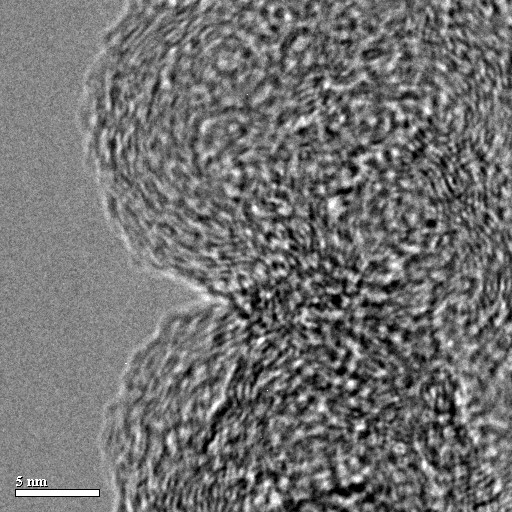Motivation

Soot particles from automotive engines, jet engines and a laboratory burner. Scale bar=100 nm
Aerosol particles can be atmospheric contaminants or valuable products. Particles with structures on the order of several nanometers are especially important. These nanoparticles are typically formed at high temperature, involving particle nucleation, surface growth, coagulation and solid-phase restructuring (e.g., sintering). The structure is characterized by the overall mass and outer radius of the agglomerate, the typical primary particle diameter, and the fashion in which the primary particles are connected to each other (eg.3 micron soot particle at the left). More recently, these agglomerates were described as fractals with fractal dimension Df~1.8.
Computer simulations using Brownian or cluster-cluster- aggregation models can reproduce the fractal structures, provided that the simulations are initialized with an assumed value of dp. Prediction of dp is more difficult! Liquids condensing on the aggregate surface add further complications to the prediction (or even measurement) of the aerosol properties.
Research Objectives

Our long-term research objective is to understand how formation conditions control particle structure, which in turn controls how the particles can be measured and their impact on the environment. Recently we have found that not only do fuel and operating conditions affect soot structure, but inhomogeneity within the combustion device produces particles with diverse structures.
Results
Recently we have found an important but previously overlooked feature of soot structure: real soot is formed non-uniform combustion zones, but often there is minimal coagulation of particles from different zones, so that the final structures show “externally mixed” primary particle polydispersivity. That is, primary particle size is uniform within aggregates, but differs greatly from aggregate to aggregate.
Analysis of TEM images can be extremely tedious, and to accelerate the process, we have developed a simple image processing algorithm that can provide the average primary particle size in an aggregate. The matlab code is available here, as a zipped folder including a user guide.